ANTIRRHINUM
Antirrhinum
L., Sp. Pl. 2: 612. 1753; Barringer & Harriman, Fl. North Amer. @ eFloras.org 17: 16; Folgers, Fl. Gran Desierto & Rio Colorado of N. W. Mexico 430. 2000.
Annual or perennial herbs, erect or sometimes vining, glabrous or hairy. Leaves mostly opposite proximally and alternate distally, sessile or petiolate, margin entire. Inflorescences usually terminal racemes. Flowers bracteate, pedicellate, ebracteolate, bisexual, zygomorphic, 5-merous, hypogynous. Sepals 5, basally connate, calyx slightly bilaterally symmetric, cupulate, lobes ovate to lanceolate. Corolla mauve, purple, red, yellow or white, bilaterally symmetric, bilabiate and personate (throat with a prominent palate i.e., upwardly projecting part of lower lip that closes throat), tubular or funnelform; tube base gibbous abaxially (lower side), not spurred; lobes 5: upper 2 and lower 3. Stamens 4, basally adnate to corolla tube, didynamous, filaments glabrous; staminode 0 or 1, minute. Carpels 2, syncarpous; ovary bilocular, ovules many per loculus, axile placentation; style slender; stigma capitate. Fruit capsule, 10-15 mm, locules unequal, dehiscence porocidal. Seeds 20-100, light brown to brown, ovoid, reticulate, wings absent.
23 species
Antirrhinum majus
Antirrhinum majus
L., Sp. Pl. 617. 1753.
Annual winter herb, erect, branched, up to 1 m tall (rarely up to 2 m), more or less glandular hairy on upper parts, woody at middle or base. Leaves mostly opposite (occasionally whorled of 3) proximally and alternate distally, simple, glabrous, elliptic, ovate to broad-lanceolate, up to 7 cm x 2.5 cm, margin entire, apex round, mucronate; petiole 5-15 mm long, slightly winged. Inflorescence terminal raceme, inflorescence axis up to 40 cm long, glandular hairy, with 8-45 flowers. Pedicel ca. 4 mm long, glandular hairy; bract 5-9 mm x 2-4 mm, ovate to ovate-lanceolate, green, glandular hairy. Flowers 3-4.5 cm long, bisexual, zygomorphic, bilabiate, personate. Sepals 5, connate at base, lobes unequal (posterior sepal largest), ovate or oblong, glandular hairy. Corolla mauve, purple, red, yellow or white, funnelform, 3-4.5 cm x 2.5-4 cm, bilabiate, personate, glandular hairy outside; tube 1.5-2 cm x ca. 1.2 cm, tube base gibbous abaxially, inside 2 longitudinal ridges on lower side with glandular hairs continuing into throat; limb 2-lipped, upper lip erect, 2.2-4 cm wide, 2-lobed, lobes 1-2.5 cm x 1.2-2 cm, apex truncate or emarginate; lower lip spreading and recurved, 3-lobed, lobes 0.6-1.2 cm x 0.8-1.3 cm, apex rounded, truncate or emarginate and recurved, lip personate with a prominent palate upwards that closes the throat, throat densely villous. Stamens 4, basally adnate to corolla tube, didynamous, longer filaments +/- 1.8 cm and shorter filaments +/- 1.3 cm long, glandular hairy, base dilated; anthers ca. 1 mm long, divaricate; staminode 1, minute. Carpels 2, syncarpous; ovary ca. 4.5 mm x 3 mm, ovate, densely hairy, bilocular, locules unequal, many ovules per loculus, axile placentation; style slender, ca. 1.3 cm long, glandular hairy; stigma simple or 2-lobed. Fruit a capsule, 10-15 mm x ca. 6 mm, obliquely ovoid, dehiscence by 3 or 4 terminal pores. Seeds many, light to dark brown, ovoid to oblong, ca. 1 mm x 0.7-1 mm, reticulate.
Common Names: Dog Flower, Snapdragon
.jpg)
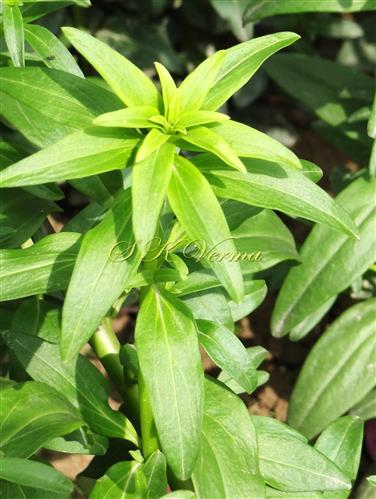
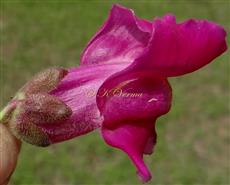
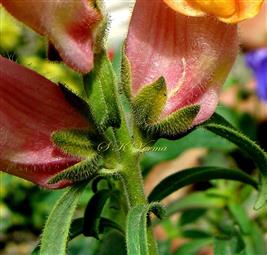
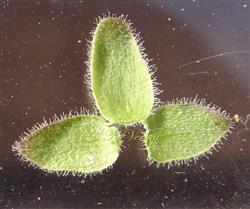
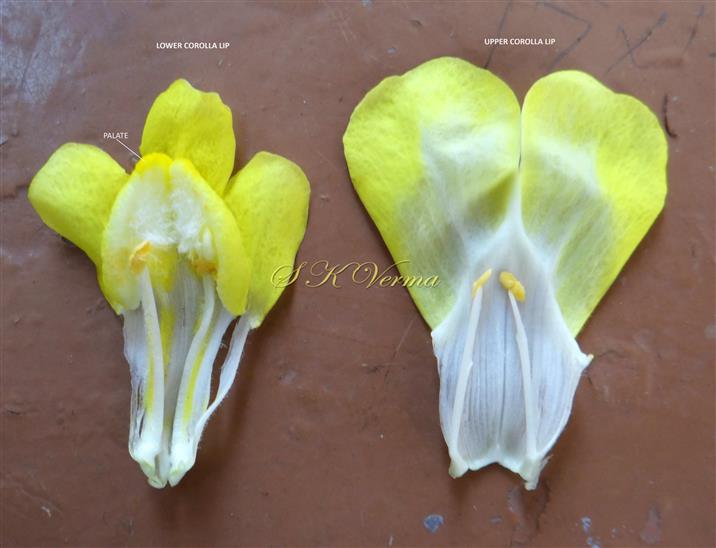
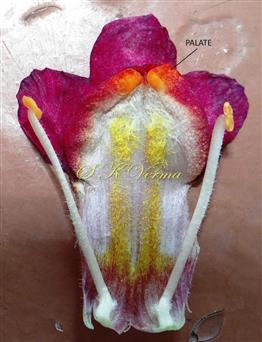
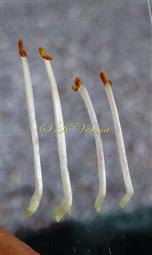
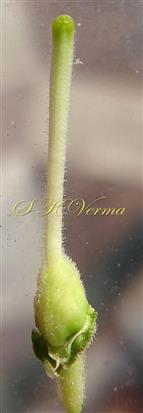
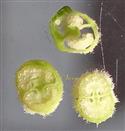
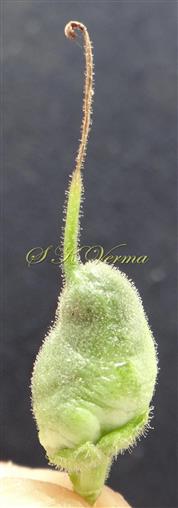
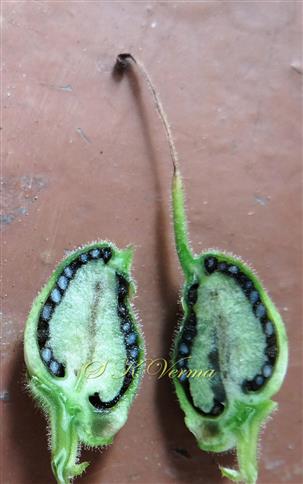
-DSC04984.jpg)
-DSC04987.jpg)
.jpg)

.jpg)











-DSC04984.jpg)
-DSC04987.jpg)
.jpg)